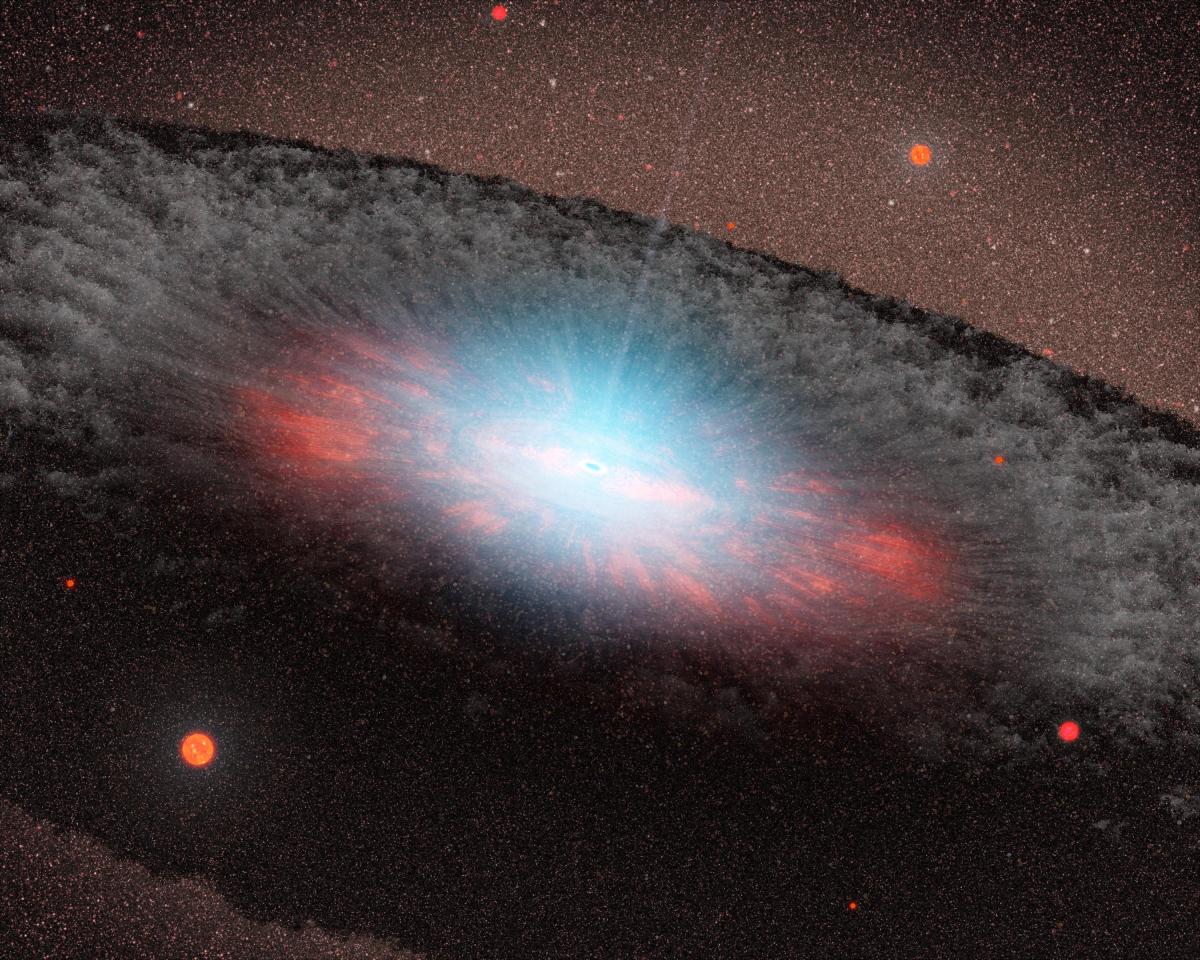Supermassive black holes are known for hanging around the centers of large galaxies and keeping us all in orbit, but a new find suggests they might be at the center of much smaller galaxies, as well, which raises questions about how they got there. A tiny nearby galaxy appears to host one of these enormous black holes, which means we could find a lot more of them out there.
Anil Seth, an astrophysicist at the University of Utah, and his team made the find using the Hubble Space Telescope and the Gemini North Telescope in Hawaii, where they noticed that stars around the inside of nearby compact galaxy M60-UCD1—so named because it orbits the much larger M60 galaxy—were orbiting much faster than the stars around the outer edges. M60-UCD1’s is also much more densely packed than the Milky Way and has more mass than would be expected for a galaxy of its size, which is often the strange case with compact galaxies.
Well, that extra mass may finally be accounted for, as Seth discovered that M60-UCD1 likely has a supermassive black hole at its core that makes up an impressive 15% of its mass. (The black hole at the center of our own galaxy is less than 1% of its total mass, for comparison). His team’s findings were published in Nature and mean that the unexpectedly large masses of other compact galaxies are also likely due to disproportionately large black holes.
So where did M60-UCD1’s black hole come from? Well, when two galaxies love each other very much… or, well, when two galaxies mash together, anyway, one may be left stripped down to its core, which would then just look like a very compact galaxy. That’s probably the case for M60-UCD1, so the next step for Seth is to verify his findings by looking to other compact galaxies to see if they, too, contain unexpected black holes. If the findings remain consistent across other galaxies, he’s found a new place to look for black holes and an explanation for tiny, dense galaxies.
(via Universe Today, image via NASA/JPL-Caltech)
- Scientists recently discovered how black holes pass gas so quickly
- Can light orbit a black hole?
- Competitive eaters want to study black holes for important science reasons
Are you following The Mary Sue on Twitter, Facebook, Tumblr, Pinterest, & Google +?









Published: Sep 19, 2014 11:24 am